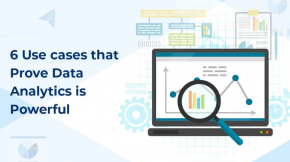How Snowflake for Insurance Reshapes the Insurance Industry in 2024
The insurance sector is undergoing massive disruption – new competitors, regulations, technologies, and customer expectations are fueling rapid evolution.
To thrive amidst this volatility, insurers must become truly data-driven organizations. Their ability to harness data and extract powerful insights will determine competitive positioning.
However, most insurance data landscapes today have critical gaps:
- Data is trapped in siloes across policy admin systems, claims systems, and channel apps.
- Rigid, on-premise infrastructure that can’t scale cost-efficiently.
- Manual analytical processes instead of algorithm-driven automation.
- Analytics fragmented across functions like underwriting, claims, and marketing.
These limitations result in delayed insights, missed growth opportunities, and inefficient operations – issues that emerging insurtech disruptors don’t face.
To capitalize on their data, incumbent carriers need flexible, unified analytics architectures. However, transforming rigid legacy systems into an agile data foundation is extremely challenging.
This is where Snowflake’s cloud data platform comes in.
The Mounting Need for Data-Driven Transformation
The insurance business model relies on assessing, pricing, and pooling risk. This necessitates compiling, processing, and extracting insights from massive amounts of data.
However, insurers have traditionally functioned in silos, with data trapped in legacy systems and channel-specific applications. This restricts a single enterprise-wide view of the customer.
Plus, aging systems limit analytical capabilities. Critical functions like underwriting and claims management often rely on manual processes versus data-driven automation.
As insurers navigate the disruptions of the 2020s, the costs of these data gaps are rising. Here are some factors driving the growing urgency for data-led transformation:
Hyper-Personalization
Customers now expect insurance experiences tailored to their unique needs. Delivering this demands integration of data across touchpoints to understand behavior and preferences.
Fragmented data makes it impossible to obtain a unified profile.
Digital Agility
Insurtech disruptors are leveraging agile tech stacks and analytics to roll out products faster and make data-backed decisions.
Incumbents with monolithic systems cannot keep pace.
Customer Empowerment
With access to information, customers can now verify claims payouts, research prices, and fact check risk models.
Insurers need sharper data insights to maintain transparency.
IoT and Real-Time Data
Telematics and wearables generate real-time contextual data on assets, liabilities, and behavior.
Legacy systems aren’t equipped to handle or learn from such high-velocity data streams.
Profitability Pressures
Rising claims costs, low-interest rates, and natural catastrophes are squeezing margins.
Data-based loss control, risk rating, and investment strategies are essential to stay profitable.
Regulatory Developments
Regulations around privacy, rate setting, and capital impacts are increasing in complexity.
This requires heightened data supervision to ensure compliance.
Overall, an industry in flux needs predictive, real-time data capabilities versus restrictive retrospective data practices. The insurers that make this leap most effectively will gain an unbeatable edge.
How Snowflake Solves the Biggest Data Challenges for Insurers
Snowflake for insurance provides a centralized data platform that overcomes the limitations of fragmented, on-premise systems. With Snowflake, insurers across all lines of business have achieved remarkable gains:
- Faster product development – Analyze diverse datasets rapidly to launch offerings attuned to emerging customer needs.
- 360-degree customer view – Break down data silos to gain unified insights across all touchpoints.
- Improved risk management – Blend internal data with external sources for sharper predictive models.
- Enhanced fraud detection – Detect fraudulent claims 7x faster by analyzing disparate data points.
- Personalization excellence – Build rich customer profiles leveraging data from across departments and channels.
- Claims transformation – Access required data immediately to settle claims faster.
- Cost efficiency – Consolidate multiple legacy systems onto a single cloud platform to save millions.
- Regulatory leadership – Meet compliance needs proactively with integrated data governance capabilities.
- Agility and innovation – Swiftly adapt existing data pipelines and architectures to support new initiatives.
These benefits come from Snowflake’s unique cloud-native architecture which offers:
Limitless scalability – Scale storage, computing, and analytical workloads up and down on demand.
Single integrated platform – Ingest data from across siloed on-premise and cloud sources into a single location.
Governance and security – Protect data via role-based access, robust encryption, and governance guardrails.
Rapid time-to-value – Implement analytics initiatives in days without managing infrastructure.
Flexibility and agility – Easily reconfigure architectures, pipelines, and models. Add diverse new data sources.
Cost efficiency – Pay only for resources used with per-second billing and optimizations.
Ecosystem – Leverage a rich partner ecosystem to build custom data tools and applications.
With these combined capabilities, Snowflake for Insurance provides the data foundation insurers require to drive innovation and growth.
Let’s examine key Snowflake use cases that will reshape insurance practices by 2024:
Snowflake Use Case #1: Next-Gen Customer Analytics
Historically, insurers took a policy-centric view of customers. But consumers now expect personalized, integrated experiences spanning multiple touchpoints and lifetimes.
To deliver this, insurers need to derive unified insights about customer journeys by combining data across traditional boundaries.
With Snowflake, insurers can ingest data from all customer interactions and core policy admin systems into a single source of truth. Snowflake for insurance scalable compute enables running analytics on enormous customer data volumes quickly.
Powerful 360-degree customer profiles can be developed leveraging capabilities like:
Customer data platform (CDP) – Unify customer data from CRM, web, mobile, and offline sources.
Customer journey analytics – Analyze how customer behaviors and preferences evolve across touchpoints and over time. Identify micro-segments, churn risks, upsell opportunities etc.
Interaction history – Store every customer interaction with full context – channel, content, purpose, and outcome.
Marketing analytics – Combine transactional data with external data like social media, weather, location etc. for sharper campaign targeting and messaging.
Sentiment analysis – Mine unstructured feedback data to understand customers’ voice.
Real-time personalization – Serve tailored recommendations and experiences dynamically based on the customer’s context.
With integrated customer insights powered by Snowflake, insurers can hyper-personalize engagement across the entire policy lifecycle.
Snowflake Use Case #2: Next-Gen Product Development
Developing compelling new offerings requires analyzing diverse data sets – market trends, competition, emerging risks, changing customer preferences, economic factors, and more.
But historically insurers’ data is scattered in siloes. This caused delays in accessing and combining relevant data.
Snowflake overcomes this fragmentation. Data engineers can rapidly load a wide range of structured, semi-structured, and unstructured datasets from across the enterprise into Snowflake’s single platform.
Data scientists can then leverage Snowflake for insurance’s native support for data science toolkits to quickly explore combinations that unlock value. Powerful capabilities include:
Data science notebooks – Use notebooks and Python and R support for interactive exploratory analysis at scale to identify opportunities.
ML Ops – Manage, monitor, retrain, and deploy ML models built using tools like H20, Databricks, and more.
Third-party data – Enrich insights by accessing over 1800 external data sets on Snowflake Data Marketplace.
Data sharing – Safely access partner data to improve joint offerings while maintaining control.
By bringing diverse data sets into a single collaborative analytics environment, insurers can develop customized risk models, usage-based insurance offerings, micro-targeted products, and more in an agile manner.
Snowflake Use Case #3: Next-Gen Risk Assessment
Accurately assessing risk factors is core to insurance profitability. But data to understand emerging risk patterns like climate change, changing demographics, new health threats, and more resides in siloes.
Snowflake helps break down these siloes. Underwriters can access a wealth of historical internal data, IoT sensor data, weather data, economic databases, government records, and more via Snowflake’s single platform.
Snowflake’s native support for location and time-series data allows analyzing geospatial and temporal risk factors at granular levels.
By running ML algorithms on integrated data, more predictive risk models can be built. Powerful capabilities include:
geospatial analytics – Gain location-specific risk insights by combining internal data with geospatial data sets.
graph analytics – Identify risk links and patterns across people, assets, events, etc.
AI-driven simulations – Run ML models on aggregated historical data to simulate future scenarios.
third-party data integration – Enrich internal data with relevant external risk data.
IoT integration – Ingest real-time telemetry data to understand emerging risks in real-time.
With Snowflake, underwriters get a comprehensive, integrated view of risk landscapes to price policies accurately based on the most current factors.
Partnering with Snowflake Experts for Transformation
To truly harness Snowflake’s potential, insurers need the right strategy and expertise. As a leading Snowflake for insurance consulting partner, Beyond Key can provide end-to-end guidance.
Our team brings deep insurance domain knowledge plus extensive hands-on experience across diverse Snowflake deployments. We work closely with insurers as a seamless extension of their teams to:
- Architect-tailored Snowflake cloud data platforms that align with their strategic goals.
- Develop phased implementation roadmaps balancing quick wins and long-term objectives.
- Perform rapid, low-risk migration of legacy data sources onto Snowflake’s integrated architecture.
- Optimize system performance, stability, and costs post-deployment.
- Continuously innovate and maximize value from the Snowflake investment as needs evolve.
By partnering with us, insurers can overcome fragmented IT environments to build agile, scalable data foundations and unlock transformational business outcomes by leveraging Snowflake for insurance.
The future of insurance will be led by carriers that harness the data advantage. Snowflake provides the platform to enable this transformation. The time to lay the groundwork is now.












